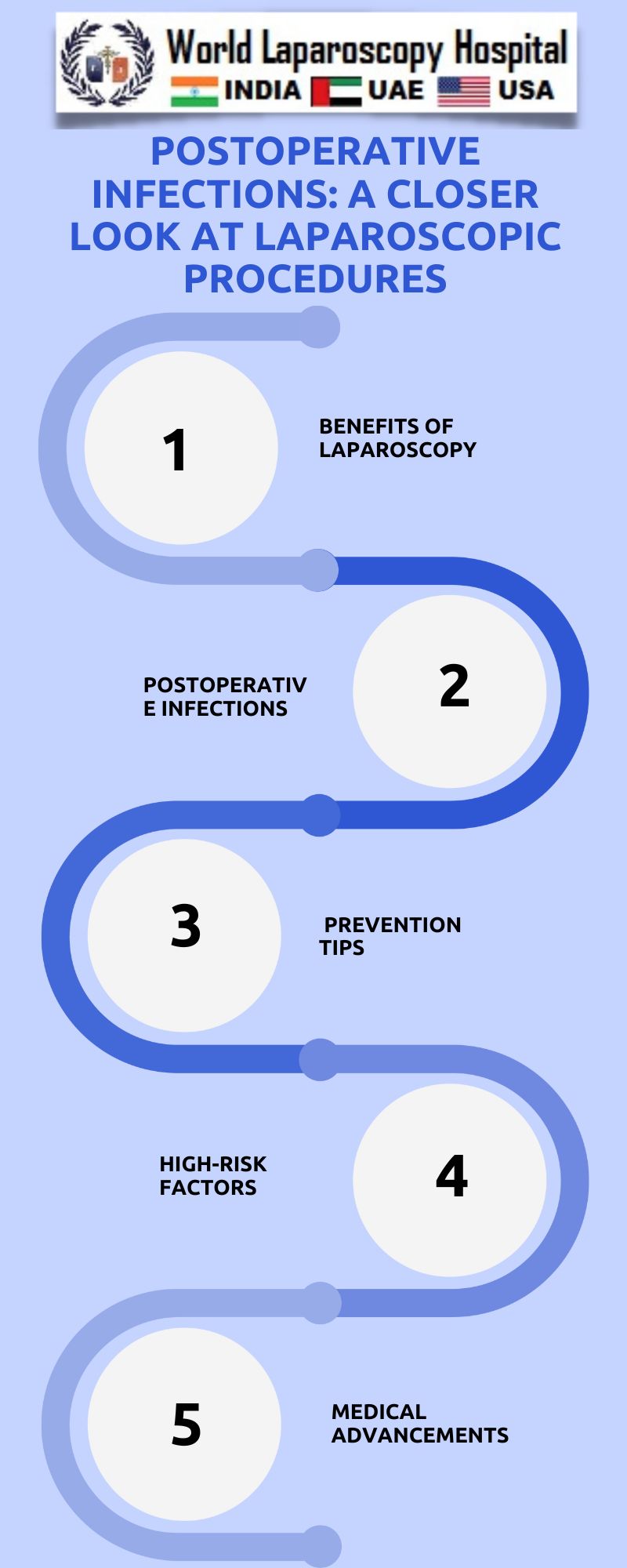Postoperative Infections: A Closer Look at Laparoscopic Procedures
Introduction:
The introduction provides a historical overview of laparoscopic surgery, highlighting its evolution from a novel approach to a mainstream method for various medical conditions. The benefits of laparoscopy, such as reduced scarring, shorter recovery times, and decreased postoperative pain, are discussed, setting the stage for an in-depth exploration of postoperative infections.

Understanding Postoperative Infections: A Comprehensive Analysis
This section delves into the dynamics of postoperative infections, elucidating the factors that contribute to their occurrence in laparoscopic procedures. Discussion points include patient-related factors, surgical site infections, microbial contamination, and the impact of immunosuppression. Emphasis is placed on the importance of a thorough understanding of these factors for healthcare professionals to develop effective preventive strategies.
The Impact of Laparoscopic Techniques on Infection Rates
This segment explores the specific ways in which laparoscopic techniques influence postoperative infection rates. Topics covered include the reduced incision size, altered physiological responses to surgery, and the potential impact of insufflation on microbial distribution. Comparative studies between laparoscopic and open procedures shed light on the infection risk associated with each approach.
Preventive Measures: A Multifaceted Approach
This section delves into the proactive strategies employed to mitigate the risk of postoperative infections in laparoscopic surgery. Topics include preoperative patient screening, meticulous sterile techniques, antimicrobial prophylaxis, and advancements in surgical technologies designed to minimize infection risks. The importance of interdisciplinary collaboration among surgeons, nurses, and infection control specialists is highlighted.
Technological Advancements in Laparoscopy: Redefining Infection Control
This segment explores cutting-edge technologies that aim to enhance infection control in laparoscopic procedures. Robotic-assisted surgery, advanced imaging systems, and innovations in sterilization techniques are discussed in detail. Case studies and success stories demonstrate the positive impact of these technological advancements on reducing postoperative infections.
Challenges and Controversies in Laparoscopic Surgery
This section addresses the challenges and controversies surrounding postoperative infections in laparoscopic procedures. Topics include the debate over the use of prophylactic antibiotics, concerns about port-site infections, and emerging issues related to antibiotic resistance. A balanced discussion provides insights into ongoing research and areas for improvement in infection control protocols.
The Role of Healthcare Professionals: A Holistic Approach
Here, the focus shifts to the critical role of healthcare professionals in preventing postoperative infections. The responsibilities of surgeons, nurses, anesthesiologists, and infection control specialists are outlined, emphasizing the need for continuous education, training, and adherence to evidence-based practices.
Patient Education and Empowerment
This section explores the importance of patient education in reducing postoperative infections. Topics include preoperative counseling, the role of patients in maintaining a healthy lifestyle, and fostering a collaborative patient-provider relationship. Real-life testimonials from patients who actively participated in their postoperative care further underscore the significance of patient empowerment.
Future Directions: Advancing Infection Control in Laparoscopy
The article concludes by envisioning the future of infection control in laparoscopic surgery. Anticipated advancements in technology, evolving best practices, and ongoing research efforts are discussed. The call for continued collaboration among researchers, healthcare professionals, and industry stakeholders is emphasized to further refine and optimize infection control strategies.
Conclusion
The conclusion summarizes key insights from the article, reinforcing the importance of a comprehensive and multidisciplinary approach to mitigate postoperative infections in laparoscopic procedures. The potential for further advancements in technology and the continuous evolution of evidence-based practices offer hope for improved patient outcomes in the future.
| Older Post | Home | Newer Post |

